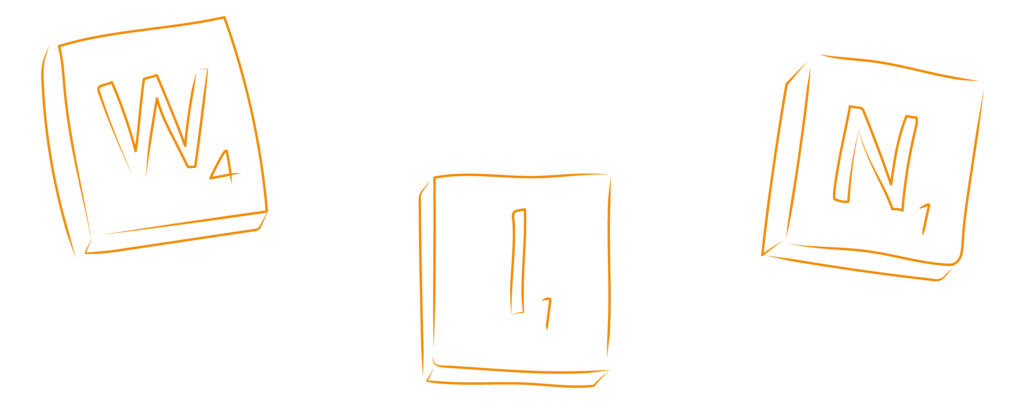Nathan Rager has worked with some of the world’s most famous companies to transform their approach to sales enablement and sales onboarding. Here, he reflects on the various approaches the sales world has adopted to distil three keys to success.
In my experience working with sales teams, from start-up sellers to global tech and engineering sales teams, the most common recurring requirement for success is to be person-centric. Whether a one-person sales lone wolf or a team responsible for delivering million-dollar complex B2B deals, the person-centric approach relies on an ability to effectively build relationships, understand what value means to the customer or client, and concretely show them what can be done to help them to achieve their desired outcome.
It seems obvious, but it is only relatively recently that the accepted ‘way of selling’ has evolved and adapted to this person-centric reality. Of course, there are a wide range of frameworks and tools that can help us do this.

People who have worked in sales and sales enablement for more than a couple of years will be familiar with many of the different ideas that have had their time as the ‘next best thing’ in sales methodology. Let’s recap…
The evolution of sales
Ford Motor Company adopts Science of Selling
Mood Selling
Mood Selling was developed by Bible Salesmen who called on prospects door-to-door. With no sales training, most salesmen during this time appealed to emotion to make a sale.
Brand Based Selling
Advertising was introduced as a way to promote brands and products and to support the selling of products. This surge in advertising led to a new approach to selling called Brand Based Selling.
Psychology Selling
Henry Link’s approach was that salespeople should learn basic psychological analysis of their customers in order to learn what made them “tick”.
Relationship Selling
Dale Carnegie’s famous book ‘How to Win Friends and Influence People’ brought in the era of relationship selling.
Barrier Selling
Barrier Selling is a method of questioning where the salesperson leads the prospect with questions for which the answer is only “Yes”.
SELL Method
Show, Explain, Lead to Benefit, Let Them Talk
ADAPT Method
Assessment, Discovery, Activation, Projection, Transition
ARCC Selling
Ask, Recommend,
Cross-Sell, and Close
Formula Selling
Formula Selling was a broad approach to several smaller methodologies that came in the 1950s.
AIDA Selling
AIDA is a standardised protocol used by salespeople to grab the Attention of a prospect, encourage an Interest in what the salesperson has to offer, stimulate a Desire to buy, and then generate an Action; committing to making a purchase from the sales rep.
Needs Satisfaction Selling
Xerox sales reps were losing deals to the competition.
In response, Xerox invested more than $10 million in developing the Needs Satisfaction Selling methodology. The essence of this methodology was that almost nobody wanted to be sold anything, but people did want to make an informed decision.
Xerox Learning Systems
The Xerox method became very successful, which led the Xerox Corporation to create Xerox Learning Systems with the sole purpose of teaching organisations its sales method, which was called Professional Selling Skills.
Professional Selling
Skills and Needs
Satisfaction Selling
During this time, the Xerox Method was even more formalised and commercialised, used to teach their own internal sales reps, but also packaged so other corporations could use the Xerox method by buying their sales training services from the Xerox Learning Systems.
Strategic Selling
Strategic Selling did not add much value to the process of selling, but it did add additional skills in managing large accounts and how to better navigate complex sales cycles.
Miller-Heiman is Organised
Miller-Heiman forms their sales consultancy.
SPIN Selling or Consultative Selling
Situational Questions
Problem Questions
Implication Questions
Needs Payoff Questions
Customer Centric Selling
Mike Bosworth, who began his career at Xerox, published a book on Customer Centric Selling. The sales rep relegates their needs to those of the customer. Empowering buyers instead of attempting to sell them, the customer centric approach leads the sales reps to help, rather than just sell.
Solutions Selling
Work with customers to develop a mutual understanding of the solutions that would be a best fit for their problem. Sellers who want to work with buyers is a requirement. Win-win is the goal.
The Challenger Sale
Developed by the Corporate Executive Board (CEB), sellers challenge customers to think differently about their problem and pre-disposed thinking about the solution. The Sales Rep follows a disciplined Challenger Method choreography.
“Consultative selling is an approach that focuses on creating value and trust with a prospect and exploring their needs before offering a solution. The salesperson’s first objective is building a relationship; their second is providing the right product.”

Overall, in spite of some interesting (or questionable) detours along the way, the general progression is (happily) one that is taking us always towards greater transparency, partnership, and collaboration. Of course, how we achieve this varies. One of the great aspects of the Challenger model is that it frames the most successful sellers (in complex B2B scenarios) as those who both know their customers and understand the industry and context so deeply that they are able to lead and guide buyers in their decision-making.
But rather than nail our colours to the mast of the latest Sales Methodology ship to leave the harbour (or any that set sail long ago), let’s ask a simple question… As enablement and learning professionals, what can we do to help our audiences to succeed? From the very personal (it is sales after all) to the more organisational, to the structural. Here are three things I see as key for every seller.
1. Great Questions
It might sound obvious, but even brilliantly high-performing sales people often reflect on how they have fallen into a set of unhealthy habits or patterns. Having the broadest range of questions at our disposal is a vital lever for multiplying our success across different businesses and buyers.
While running foundational questioning approaches with seasoned sales leaders for one global client, the main thing the group remembered was to use open and hypothetical questions to understand the customer context. Even in the biggest organisations, with the very best sales leaders, we can fall into the trap of making assumptions based on our own experience, missing key data.
2. Genuine Curiosity
Harder to train, yet essential to have. All the questions in the world can’t hide a disinterested seller. Curiosity has become something of a company values buzzword, but the reality is that our customers are looking for real human connection first and foremost. A genuine sense of intrigue. If our sellers don’t really want to understand the context and challenges, they won’t succeed.
In our own sales process at Interactive Workshops, we know that if we are genuinely fascinated by what a client does, we are not just more likely to get the sale, but to build a deep and lasting partnership. We also know it’s far easier—and far more successful-—to encourage genuine curiosity than to train sellers to fake it. An intriguing fact, connection or story is always there waiting to be uncovered by the curious.
Harder to train, yet essential to have. All the questions in the world can’t hide a disinterested seller. Curiosity has become something of a company values buzzword, but the reality is that our customers are looking for real human connection first and foremost. A genuine sense of intrigue. If our sellers don’t really want to understand the context and challenges, they won’t succeed.
3. Tools on Demand
In the complex world of modern sales, the formulaic approach is increasingly limited. The buyer’s world changes fast. The sellers’ skillsets have to change in sync. At one point in time, an intensive programme could deliver all the sales skills needed for a sales career. Those days are long gone. Modern sellers thrive with easy access to what they need, when they need it.
In a recent examination of a planned refresh of a global sales onboarding programme, our global technology client identified that having invested in a large-scale, role-specific, 4+ week sales onboarding programme, only 7% of targeted hires were completing the structured programme.
In summary, everything has changed (at least a few times over) in the world of sales enablement. But really, nothing much has changed. Whatever framework or model our organisations provide for sellers to structure their approach, it all comes down to doing the basics well. We can put huge amounts of effort into building elaborate solutions, but if we have interested people, asking all the right questions, with easy access to skills and tools content, we’ll sell. And sell real value.
“Value selling is a sales technique that focuses on helping prospects understand how a product or service can solve their problems, rather than highlighting the features and specs. In other words—what value will your products or services bring to their lives?”
